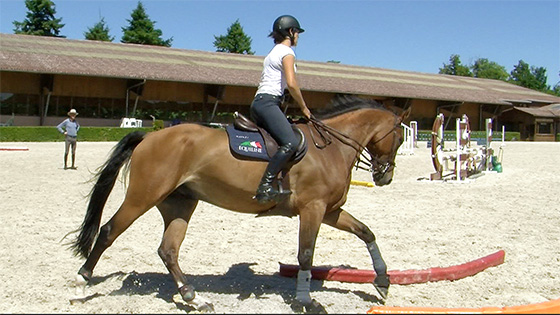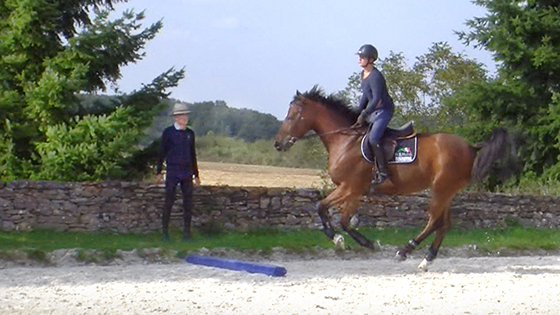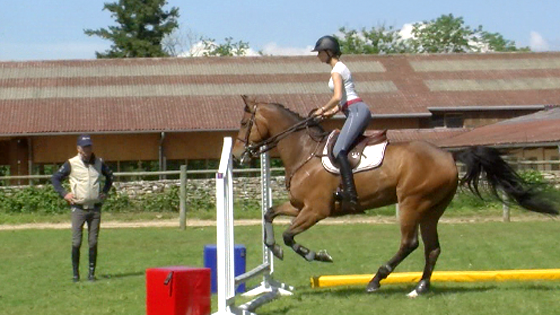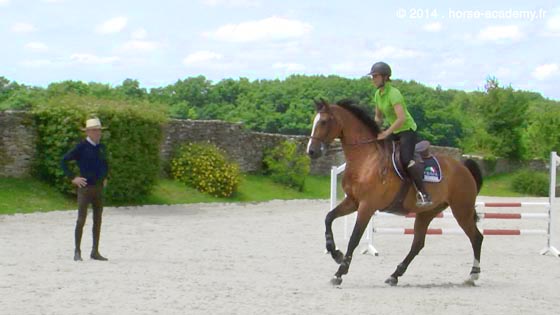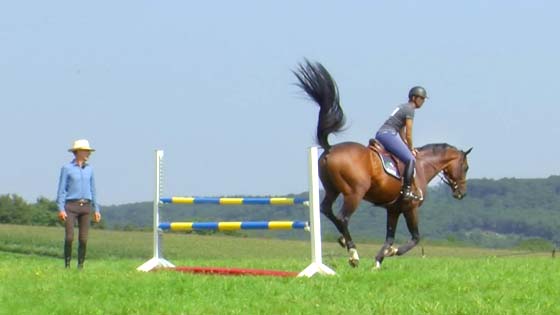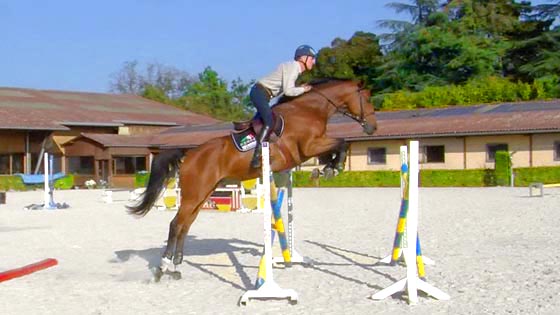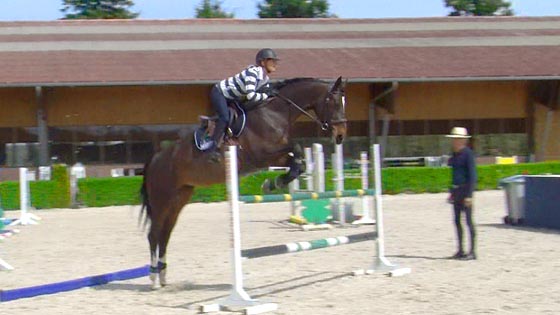How to create straightness in the rider and horse. Step 2
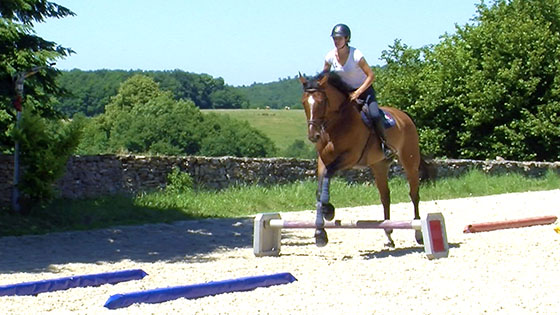
This exercise is a good preliminary work to jumping. It is about being thorough regarding the straightness, the composure, the steadiness of the canter, the precision in the track including in the approach and landing phases of a jump.
This second step of the exercise increases the level of difficulty as we add some cavalettis on the track. It’s an excellent transition from the flat work to the jumping work. The previous session helped setting the horse and rider’s straightness, calm and steadiness in the canter. The requirements stay the same when approaching or landing a cavalettis. If the rider was not successful in the previous exercise, it is advised to keep practising it on the flat before introducing the cavalettis. Sometimes, just to add some ground poles can be sufficient to disturb the rider’s serenity. If the rider starts looking down, he/she will disturb his/her balance forward. If the rider gets unbalanced, he/she can’t follow the motion of his/her horse. It leads the horse to break his cadence and become less precise in his direction or even to get over the bit. As we have already mentioned, this situation is generated by a rider who is worried.
This exercise from Michel, is an excellent way to keep the rider’s mind focused, serein, and aware of each of his action. Selene starts the exercise at a canter but according to the level the rider and the experience of the horse, it may be necessary to practise first at a trot a few times with some ground poles.
This exercise is linked to sheet T3 of the program Training 1

